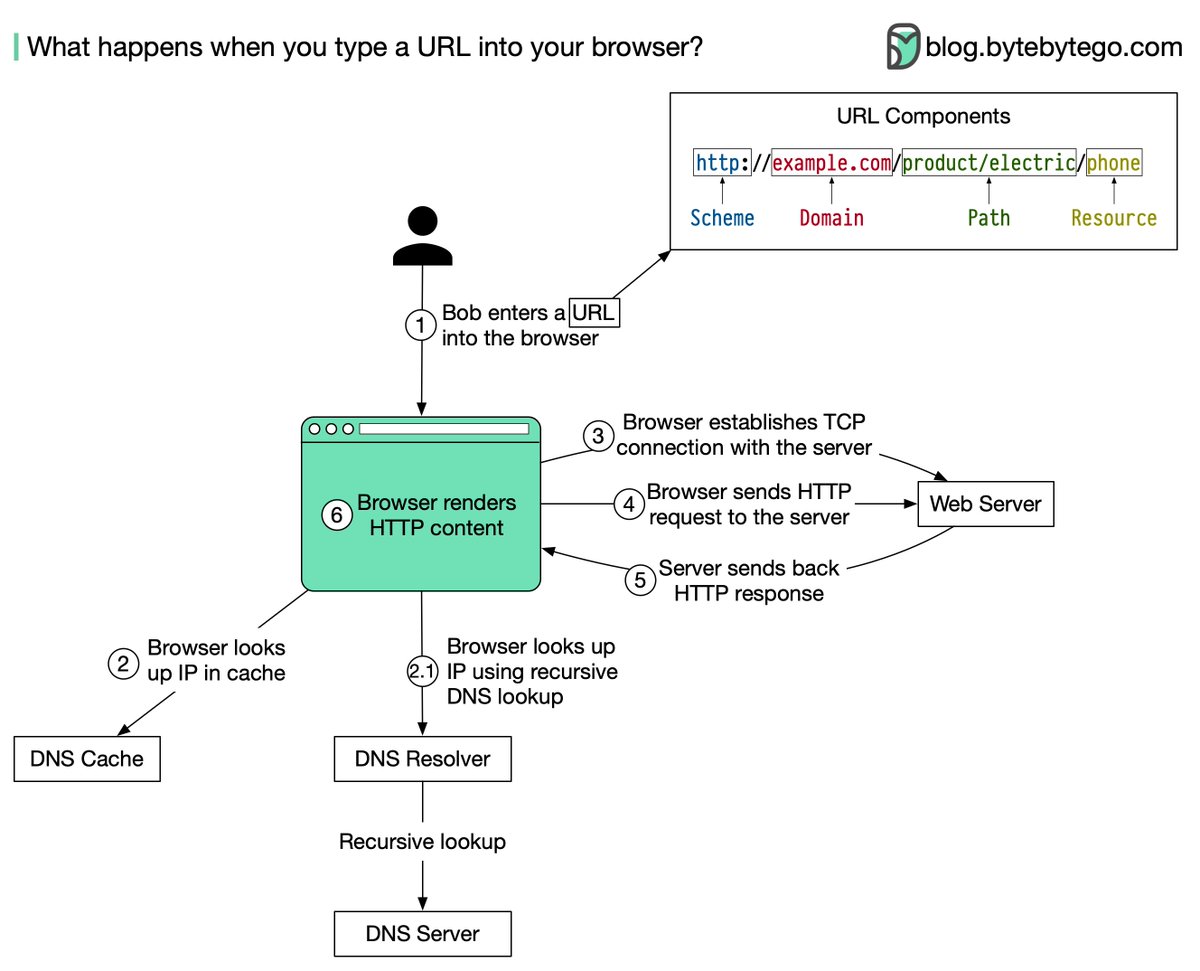# Tweets From Sahn Lam
! [ rw-book-cover] (https://pbs.twimg.com/profile_images/1343612688912371713/YFqzEFlp.jpg)
URL: https://twitter.com/sahnlam
Author: @sahnlam on Twitter

## AI-Generated Summary
None
## Highlights
> What Happens When You Type a URL into Your Browser?
> When you type a URL into your browser and hit enter, a lot happens behind the scenes to turn that website into the page rendered on your screen. Let's break it down step-by-step:
> First, the browser checks if it has the server's IP address cached or requests it from DNS servers to translate the domain name to an IP address.
> Next, the browser opens a TCP connection to that IP address. For HTTPS sites, this handshaking process is more complex.
> The browser crafts an HTTP request asking the server to send back the content for the specific page identified in the URL.
> When the server responds, the browser displays initial HTML while discovering and fetching additional resources like images and JavaScript referenced in the file.
> Modern websites often require dozens of requests that go through this cycle to fully construct the page. Browsers and servers optimize this process in various ways, but fundamentally web traffic relies on DNS name resolution, TCP data transfer, and HTTP requests/responses.
> –
> Subscribe to our weekly newsletter to get a Free System Design PDF (158 pages): https://t.co/kNfv0DV5nH
>  ([View Tweet](https://twitter.com/sahnlam/status/1831391791108518075))

## New highlights added September 14, 2024 at 4:43 PM
> URL, URI, URN: Understanding the Differences
> These terms form the foundation for identifying and accessing resources on the internet. Without them, finding and sharing information online would be more difficult.
> URI (Uniform Resource Identifier)
> - Identifies a logical or physical resource on the web
> - URL and URN are subtypes of URI
> - General structure: scheme:[//authority]path[?query][#fragment]
> URL (Uniform Resource Locator):
> - Locates and provides access to a resource on the web
> - Key concept in HTTP, also used with other protocols (e.g., FTP, JDBC)
> URN (Uniform Resource Name):
> - Names a resource without specifying its location or how to access it
> - Typically uses the "urn" scheme
> - Serves as persistent, location-independent resource identifiers
> - Cannot be used to locate a resource directly. They need to be resolved through a separate resolution mechanism.
> –
> Subscribe to our weekly newsletter to get a Free System Design PDF (158 pages): https://t.co/kNfv0DVDdf
>  ([View Tweet](https://twitter.com/sahnlam/status/1833729191944290625))

## New highlights added February 27, 2025 at 6:24 AM
> HTTPS Under the Hood
>  ([View Tweet](https://twitter.com/sahnlam/status/1894980292030718148))